


Ziegfeld Follies
The late, great impresario Florenz Ziegfeld looks down from heaven and ordains a new revue in his grand old style.
-
- Cast:
- Lucille Ball , Fred Astaire , Lucille Bremer , Fanny Brice , Judy Garland , Kathryn Grayson , Lena Horne


Similar titles
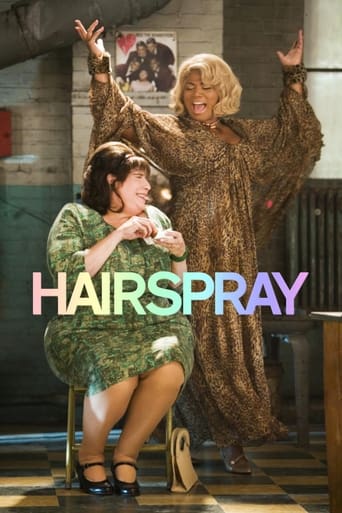

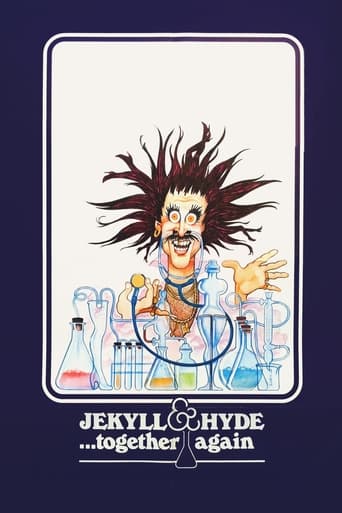
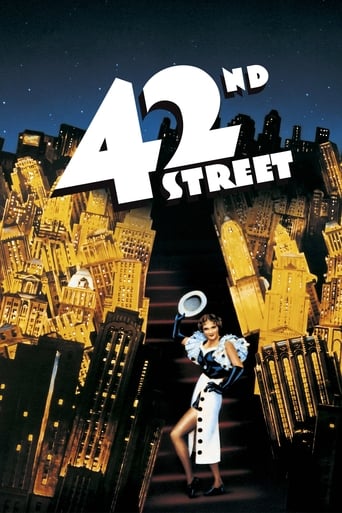

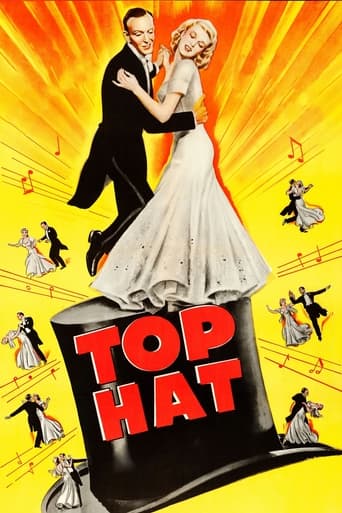

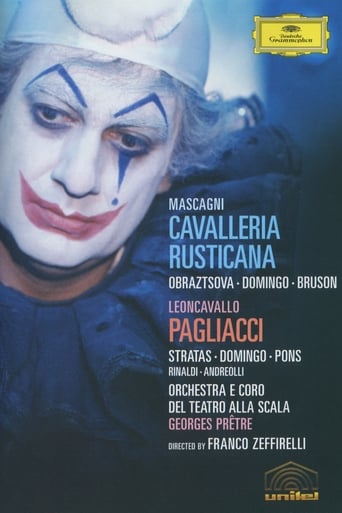
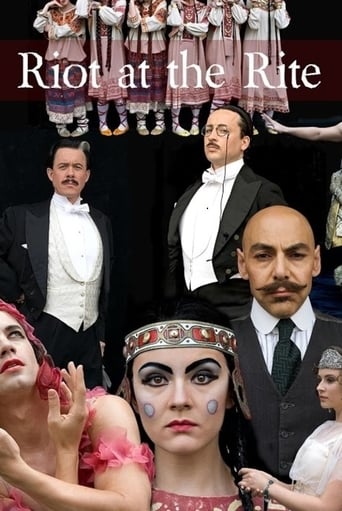
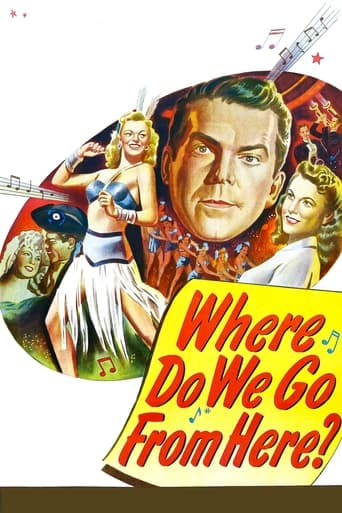
Reviews
When a movie has you begging for it to end not even half way through it's pure crap. We've all seen this movie and this characters millions of times, nothing new in it. Don't waste your time.
This is a small, humorous movie in some ways, but it has a huge heart. What a nice experience.
This is one of the best movies I’ve seen in a very long time. You have to go and see this on the big screen.
Watching it is like watching the spectacle of a class clown at their best: you laugh at their jokes, instigate their defiance, and "ooooh" when they get in trouble.
MGM Technicolor musical, light on plot but big on music and comedy. It's a sort of spiritual sequel to The Great Ziegfeld, with William Powell reprising his role from that biopic as Florenz Ziegfeld. Up in Heaven, Ziegfeld looks down on Earth and reminisces (through stop motion puppetry!) about his Follies. Then he wonders what kind of show he could produce if he had access to MGM's stable of stars. From there we get nearly two hours of routines featuring these stars doing musical numbers and comedy skits. I won't bother to list all the talent or numbers. The best are Virginia O'Brien's man-crazy number, Esther Williams swimming, all the Astaire numbers (including Limehouse Blues in yellowface, beautifully staged regardless of controversy), and Judy Garland's fun "The Great Lady Has an Interview." The best musical number of them all is easily "The Babbitt And The Bromide" with Fred Astaire and Gene Kelly. The worst is probably Lena Horne's forgettable piece. The comedy skits are all pretty corny. I didn't laugh once. The main reason to see this, besides the stars and the tunes, is that it's a beautiful-looking picture, filmed in glorious Technicolor with lovely costumes and sets. A visual delight with some fine musical numbers. Just don't get hung up on the lack of plot.
Lucille Ball excellent. Cracking that whip. Dressed in pink. Those cats. Meow.Tap extravaganza with Astaire and Kelly. Too awesome. A pairing for the ages.Booze Skelton sketch delightful, and memorable.Two dollars. I always remember that one.Charise beautiful pointe ballet dancer. Also great pair dancers were Bremer and Astaire.O'Brien always excellent in her deadpan singing -- witness The Harvey Girls.William Powell great, as always. I liked the heavenly Shakespeare, Barnum and Ziegfeld motifs, as well as the dolls in the beginning. These dolls are so darling and lifelike.This movie was released the year I was born. The War -- World War Two -- was over, and people wanted to relax and enjoy life. The actual Ziegfeld had actually passed away the previous decade, the victim of bankruptcy and IMO the First World War taking away his audience and subsequently causing more people to leave the old ways behind (live performances) and prefer silent and then sound films.In real life, it is said that Ziegfeld's wife, Billie Burke, went back to work to pay Ziegfeld's bills -- he apparently was wiped out in the Stock Market Crash of 1929. He passed away a few years later. Billie had been a stage star in New York City for Charles Frohman pre-World War One, married Ziegfeld and retired from performing (to Frohman's disapproval and disgust). She had a daughter with Ziegfeld named Patricia. You will see Billie in some 1930s and 1940s films, including the blockbuster The Wizard of Oz -- portraying Glinda, the Good Witch of the North. She looked beautiful in her tall crown and pink gauzy gown in that movie, and in other movies she was well known for portraying her ditzy, comedic, goofy society matrons.This movie portrays the deceased Ziegfeld as living in the lap of luxury, but his real life ended, I feel, in near poverty. Still, I enjoyed the heavenly furnishings, etc., near the beginning of this film.I am an historian of theatre and film. I have a B.A. Degree in History. I am also a futurist, meaning that we study the past and discuss trends leading to the future. I have studied theatrical critiquing and cinematic techniques. I enjoy studying the lives of actors and actresses, in stage, film and television, both present and past, but especially in the past.I enjoy historical films, as well as song and dance musicals. This film fits these categories.10/10
ZIEGFELD FOLLIES (Metro-Goldwyn-Mayer, 1945), directed by Vincente Minnelli (along with several others for individual productions and skits) is not exactly a sequel to the studio's own Academy Award winning biography, THE GREAT ZIEGFELD (1936), but another by name only tribute to the legendary Broadway impresario, Florenz Ziegfeld (1969-1932). Unlike the original three-hour spectacle and its follow-up story ZIEGFELD GIRL (1941), which looked into the personal lives of three fictional Ziegfeld showgirls, ZIEGFELD FOLLIES contains no story. Technically an all-star musical revue with an ensemble of current MGM stars, it's a wonder why it wasn't titled ZIEGFELD FOLLIES of 1946 as originally intended or possibly THE NEW ZIEGFELD FOLLIES for that matter. The only story involved is its ten minute prologue featuring William Powell reprising his original role of "The Great Ziegfeld." While Ziegfeld dies at the finish of THE GREAT ZIEGFELD, ZIEGFELD FOLLIES keeps the original Ziegfeld alive through his "heavenly days," reminiscing about the "good old days" starting with his first Follies of 1907 that introduced his first discovery, French actress Anna Held, in her signature number, "It's Delightful to be Married." Rather than featuring actors re-enacting personalities of the past, other noted Ziegfeld discoveries of Marilyn Miller, Fannie Brice, Will Rogers and Eddie Cantor singing "If You Knew Susie," are cleverly presented as miniature caricature doll-like replicas through the creation of Bunin's Puppets. With the legendary Broadway shows "Sally," "Show Boat" and "Whoopee" behind him, Ziegfeld, looking down on Earth from the heavens in extravagant red robe, wonders what it would be like to produce just one more Follies. After selecting Fred Astaire the logical choice to introduce his new follies, the revue begins with Ziegfeld seen no more:ZIEGFELD DAYS: In his tribute to Ziegfeld and he "Glorifying the American Girl." Fred Astaire goes into his song, "Bring on the Beautiful Girls" followed by Cyd Charisse (ballet dancer), Lucille Ball (circus ring leader) and an assortment of beautiful girls. Virginia O'Brien finishes the number by singing to "Here's to the Wonderful Men." WATER BALLET: Esther Williams; NUMBER PLEASE (comedy skit) directed by Robert Lewis: KEENAN WYNN, with Grady Sutton; Giuseppi Verdi's LA TRAVIATA: With James Melton and Marion Bell singing "Liabiamo Nelieti Calici"; PAY THE TWO DOLLARS: (comedy skit) starring Victor Moore, Edward Arnold; THIS HEART IS MINE: A dance story starring Fred Astaire (The Imposter); and Lucille Bremer (The Princess); THE SWEEPSTAKES TICKET (comedy skit) directed by Roy Del Ruth: Fannie Bruce (Nora Edelman); Hume Cronyn (Monty Edelman); William Frawley (Mr. Martin, the landlord); LOVE, directed by Lemuel Ayres, sung by Lena Horne; WHEN TELEVISION COMES, (comedy skit) directed by George Sidney, with Red Skelton spoofing television commercials; LIMEHOUSE BLUES: Dramatic pantomime with Fred Astaire (Tai Long); Lucille Bremer (Moy Ling); THE INTERVIEW, directed by Vincente Minnelli, choreography by Charles Walters. Judy Garland (Movie Star) with ensemble of male dancers and reporters; THE BABBIT AND THE BROMIDE (music and lyrics by George and Ira Gershwin), with Fred Astaire and Gene Kelly; THERE'S BEAUTY EVERYWHERE (finale) Kathryn Grayson.While the top-name stars get to appear in only one stage performance, Fred Astaire gets the most of his four musical segments, two opposite Lucille Bremer. The most famous and admired happens to be "The Babbit and the Bromide," pairing Astaire with another legendary dancer, Gene Kelly. Though these two legends never team up again for an actual motion picture musical, they worked together once more as hosts for another MGM tribute, THAT'S ENTERTAINMENT PART II (1976). Judy Garland, one of the top stars of the MGM lot, would have been expected to appear in a few song numbers. Instead, she gets only one, THE INTERVIEW, which provides her with something unlike anything she's done before, that of a celebrity sophisticate. Lena Horne stands out in her solo number as does Kathryn Grayson for a grand finale with assortment of beautiful girls, in the great Ziegfeld tradition. Of the three comedy skits, the best comes from Fannie Brice, the only member in this revue who was part of original Ziegfeld follies. While Keenan Wynn's "Number Please" is best associated with comedian Lou Costello's phone segment from WHO DONE IT? (Universal, 1942), Costello and his teammate, Bud Abbott, would have made a hilarious pair for "Pay the Two Dollars," as performed by Edward Arnold (The Lawyer) and Victor Moore (The Client). In its present proceedings, the skit is well staged with Arnold and Moore getting the laughs here. Though it was nice having William Powell playing Florenz Ziegfeld again, his opening introduction in Heaven really wasn't necessary, though possibly the only way to get an outlook on Ziegfeld for the benefit of those unfamiliar of his name and accomplishments. Far from an original premise considering how movie musical revues of this type originated during the dawn of sound. MGM started it all with "The Hollywood Revue of 1929" which lead to imitators by other studios, including THE SHOW OF SHOWS (Warners, 1929); PARAMOUNT ON PARADE (Paramount, 1930) and Universal's THE KING OF JAZZ (1930). Since then, technology in movie making improved considerably, with carefully stage production numbers and lavish Technicolor being its main assets. Rather than the presence of master(s) of ceremonies, ZIEGFELD FOLLIES, does one better introducing individual acts through the turning of title pages of listed casting credits. Being more MGM than Ziegfeld, the goal for ZIEGFELD FOLLIES is entertainment, and it delivers in the best MGM style. Distributed to home video in the 1990s, and occasionally broadcast on Turner Classic Movies cable network, the DVD offering of ZIEGFELD FOLLIES offers some really interesting background and making of the movie, along with three surviving audio segments that never made it to the final print. That's entertainment. (***1/2)
I have enjoyed reading the various postings about this movie, but found it somewhat depressing to find so many viewers have been obviously conditioned by present day "standards of talent." (and by that I mean there is no one today to fill the shoes of these musical giants). Speaking for myself, this was quite an amazing achievement in the form it was meant to be -- a "Review" -- not a musical with a storyline -- and I think it is only fair to judge it on those terms, rather than what you wished it would be. My opinion: most of the comedy numbers were OK, but one should remember that these numbers were directed at a 1946 audience, who appreciated this kind of gentle humor more than present day viewers. As for the musical numbers -- I don't think MGM ever mounted anything as lavish and, in particular, "This Heart of Mine". One posting said the storyline didn't make any sense (it certainly did to me), and more than one decried the inadequacy of Lucille Bremer as a dancer. Lucille Bremer was not only beautiful, but was an excellent dancer and for me, they were perfect together. "Limehouse Blues" (filmed on the "Dorian Gray" set) is one for the history books. Judy Garland looked beautiful and, in an early example, showed what a terrific range she possessed. The Technicolor was magnificent. By the way, contrary to what was posted, this was one of MGM's highest grosses of he 1940s.
